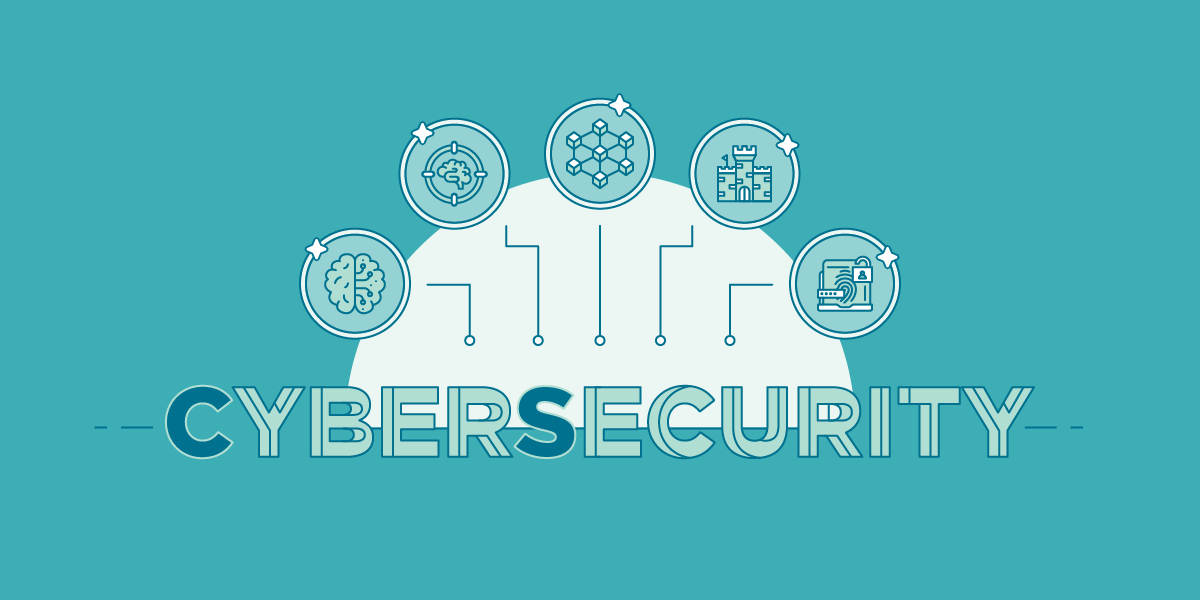Cyber-attackers, we don’t like them, but there’s one thing we have to give them – a true innovator spirit. In order to be able to defend ourselves, we must keep pace with new technologies and their further development. Innovations in cybersecurity are laying new foundations to defend against unwanted attacks on business networks. Adoption of new working environments during the Covid crisis made the role of cybersecurity even more vital than before. The acceleration of digital transformation, as well as the development of innovative technologies affected the current situation by raising the number of cyberattacks at a record high. Attackers are benefiting from every vulnerability, and we can all agree that 2020 brought many to our table.
Let’s take a look at the top 5 emerging technologies responsible for the cybersecurity industry’s production of innovative developments.

1. AI and Machine learning
Promises of artificial intelligence in cybersecurity are many and mainly related to risk identification systems. While automation provides detection of any wrongdoings, it can also safeguard the attack targets. Deep learning is being used to track logs, transactions and real-time data to discover threats in the network. The ability of unsupervised machine learning is to find all kinds of unknown patterns and detect anomalies. It can “learn” to spot patterns and signal a potential attempt of attack but it can also adapt to disguise the same behavior so, at the same time, it opposes a threat to cybersecurity. Innovative technologies like this are getting better every day while providing valuable insights on steps that can be taken to avoid issues caused by sophisticated attacker methods.

2. Behavioral Analytics
Behavioral analytics became an integral part of advanced cybersecurity solutions, constantly evolving to provide stronger protection. This technology allows all behavioral data to be stored and then processed to examine trends, patterns and habits in each user’s workflow. A behavioral baseline is created for the whole organization and when, for example, an abnormal increase in data transmission from a certain device happens, it indicates a possible cybersecurity issue. While this cybersecurity innovation was used for networks at first, it now shows an increasing application in user devices. I already mentioned the Royal Bank of Scotland (read more: Innovations shaping the retail banking industry in 2020) as an example of a financial institution using this kind of innovative technology in the service of cybersecurity.

3. Blockchain
“I don’t know what blockchain is, and at this point, I’m too afraid to ask.” – Random internet user
One of the first applications of blockchain technology took place in 2009 when it was presented as a decentralized system with no central server. It allows each participant to have a regularly updated copy of a large register and this makes the whole system completely transparent and protected against falsifications. Transaction history can be investigated at any time by any member of the network which allows full traceability of transactions of all kinds. Alongside its infallibility, this is the main asset of blockchain technology that makes it able to prevent any data breach, cyberattacks and fraudulent activities on the network. Unlike a traditional centralized server, blockchain is a distributed server with properties of an impassable wall and it is currently impossible to bring malware into it.
Blockchain can eliminate the authentication process as a potential attack spot because with the use of this technology companies can authenticate devices and users without the need for passwords. Also, each transaction is timestamped and digitally signed so it can’t be reversed or tampered with. Thanks to blockchain technology, cybersecurity promises a new dimension of conducting business transactions safely.

4. Zero-Trust Model
The Zero-trust model requires all users to be authenticated and authorized before accessing data and resources, even when they are inside the organization’s enterprise network. This architecture takes nothing for granted, which is an innovative view in comparison to traditional security models assuming that everything inside an organization’s network is safe by default. Internal attacks are placed side by side with external attacks and both require equal treatment. As the name itself suggests, trust is a non-existent concept in these systems and every environment is regarded as already breached. Applying a zero-trust model includes identifying critical data, mapping the flow of this data, logical and physical segmentation, and constant endpoint monitoring with automated threat detection and response capabilities.

5. Hardware authentication
Hardware authentication is an innovative technology that generates unique and temporary cryptographic code for users to type in alongside the password in order to gain access to stored data. This kind of approach relies on dedicated physical evidence for user authentication, in combination with a password. While this kind of physical security tokens can be lost or stolen from legitimate users, there are some alternatives such as software-based authentication or SMS verification, often referred to as two-factor authentication (2FA). This is something that is already widely adopted, while embedded authenticators as a technology for verification of user’s identity are on the rise.
Innovations in cybersecurity initiated major breakthroughs in this domain. It is essential for cybersecurity professionals to be innovative and put innovations in this field into practice since we’re moving to a digitally-enabled future. If we work on getting familiar with disruptive technologies providing better security on the network, we can accelerate our innovation journey in a sustainable and safe way. Innovation Cloud is keeping up with top industry standards and is putting safety first. As one of the most stringent certifications for information security controls, ISO/IEC 27001:2013 certificate guarantees that all our processes regarding information security are managed and operated in a manner that provides the highest level of safety of intellectual property and highly sensitive business data of our clients. After all, we are all in this together.







Excellent article! Your post is essential today. Thanks for sharing, by the way.